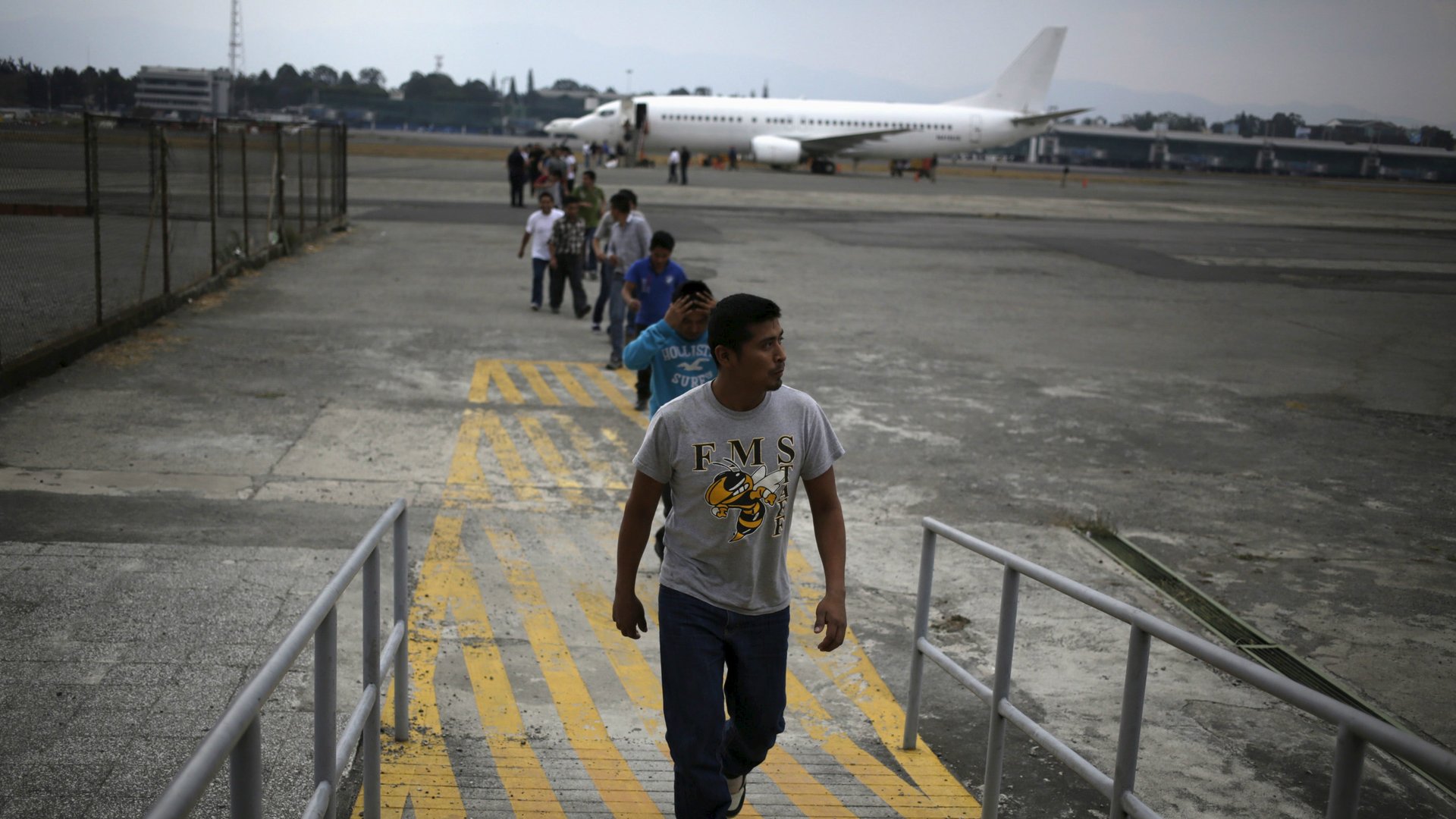The US government deports so many immigrants each year that it runs its own air service
Since 2006, Immigration and Customs Enforcement, the agency tasked with removing individuals who have entered the US illegally, has chartered airplanes to fly deported migrants back to their home countries. And US taxpayers foot the bill for the (one-way) tickets.


Since 2006, Immigration and Customs Enforcement, the agency tasked with removing individuals who have entered the US illegally, has chartered airplanes to fly deported migrants back to their home countries. And US taxpayers foot the bill for the (one-way) tickets.
ICE Air Operations says it has flown hundreds of thousands of immigrants to border crossings or to their home countries, on Boeing 737 and MD-80 airplanes. (Immigrants are also flown on commercial flights.)
It’s an industry that could boom under US president Donald Trump, who has taken a hard line against illegal immigration. One such measure would be to deport immigrants to Mexico even if they have a pending legal appeal, instead of allowing them to wait it out in the US. This week, the Trump administration announced a series of measures to make it easier to deport undocumented immigrants.
Convicted criminals that are considered violent or dangerous can be escorted back on the flight by to their countries by ICE agents, and shackled, the New York Times reported (paywall.) Many are not, however.
While Trump has vowed to build a wall along the southern border with Mexico, the changing face of US immigration could also make the air-travel department more important. ICE notes that emigration from Mexico has declined, while that from Central American countries has increased. Deported immigrants from those countries, as well as other farther-off nations in Europe, Asia, and Africa, are often flown back to their home nations, while those returning to Mexico often are generally sent home by bus.
So what’s the cost? ICE Air Operations—with agency hubs in Louisiana, Arizona, Florida, and Texas—transported 930,435 detainees at an average of $8,419 per flight-hour for charters, including crew, fuel, and maintenance, said the Inspector General of the Department of Homeland Security in an audit of the program (pdf) conducted between October 2010 and March 2014. The agency paid $464 million for charter flights in that period.
But the report said poor planning meant flights were often not full and if they were fuller that the program could have saved more than $41 million.
ICE told Quartz that it disagrees with the report’s use of empty seats on flights as a measure of efficiency “because delaying the removal of individuals in order to fill empty seats causes the agency to incur ancillary costs that may exceed the cost of the seats.”
But perhaps Trump, who has complained about costs of other aspects of government air travel, such as the next generation of Air Force One, may try to make sure the planes are full.
This story has been updated to include a comment from ICE.